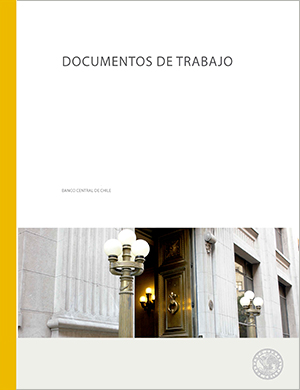Working Papers N°618: El Índice Cartera Vencida como Medida de Riesgo de Crédito: Análisis y Aplicación al Caso de Chile
Publications
Working Papers N°618: El Índice Cartera Vencida como Medida de Riesgo de Crédito: Análisis y Aplicación al Caso de Chile
Autor: Andrés Sagner
Description
This paper proposes the non-performing loans (NPL) ratio, defined as the change in the stock of NPL adjusted by write-offs and standardized by loans, as the main measure to be used for modeling the credit risk of the Chilean banking system. In particular, the paper identifies certain statistical and conceptual advantages of this measure with respect to loan loss provisions (LLP), which support this idea. First, the NPL ratio by type of credit covers a greater time span than LLP. Second, the forward-looking nature of LLP –one of its main advantages over the NPL ratio– is applicable only from 2004 onward due to various changes in Chilean reporting standards. Third, LLP is discretionary because provisioning is made on the basis of relative risk aversion of banks. Fourth, the NPL ratio produces smoother series than LLP for consumer and mortgage loans. In addition, the dynamic structure observed in both time series does not differ significantly. The econometric model estimated for the period January 1997 to June 2010 shows that the NPL ratio has statistically significant relations with macroeconomic aggregates such as the annual output growth, the short and long term interest rates, the annual inflation rate, the peso-dollar exchange rate, and the surprises in credit growth. Finally, the out-of-sample forecasts indicate differences between the actual and projected NPL ratios that are economically significant only in the case of mortgage credit. For the remaining portfolios, the evolution of this ratio during the period of July 2008 to June 2010 does not differ significantly from that predicted by the econometric model.
Working Papers N°618: El Índice Cartera Vencida como Medida de Riesgo de Crédito: Análisis y Aplicación al Caso de Chile
Boxes and graphics

